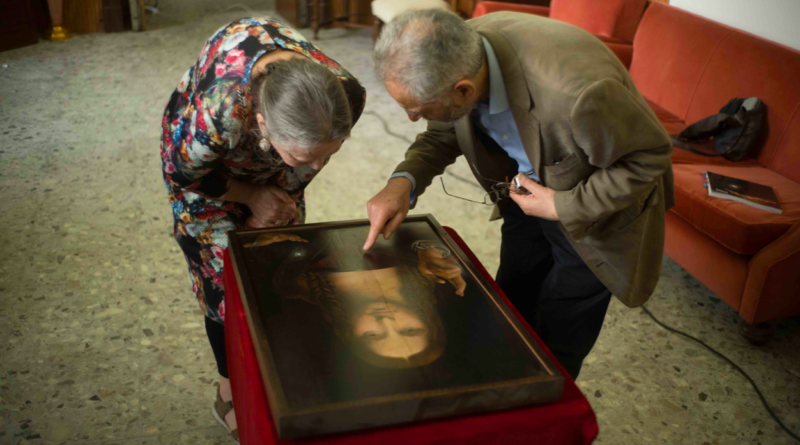REVIEW: ‘The Lost Leonardo’ examines the journey of the Salvator Mundi
Photo: Dianne Modestini and Ashok Roy inspect the Naples copy of the Salvator Mundi (2019). Photo courtesy of THE LOST LEONARDO / ADAM JANDRUP. Provided by Sony Pictures Classics with permission.
The Lost Leonardo, a new documentary directed by Andreas Koefoed, follows the unbelievable journey of a painting found in New Orleans that was purportedly drawn by Leonardo da Vinci. There are many people who believe in its authenticity, while others are skeptical. No matter where one comes down on this debate, the legend of this painting — dubbed Salvator Mundi (Savior of the World) — outpaces any concerns about its provenance and originality.
The movie, which opens Friday, Aug. 13 at New York City’s Film Forum, offers a close investigation of the painting itself, but the film also examines the art market of the super-rich, and how paintings are sold and auctioned in strange, almost obscene ways. As the film suggests, there are many people who are involved in this painting’s success who want it to be authentic, and the movie questions if their beliefs come from genuine artistic principles or, frankly, their monetary investments in this supposed lost classic. If it’s real, they’re millionaires. If it’s not, they have a much lesser work on their hands.
In many ways, it matters so much whether or not this is a true da Vinci; however, in other ways, it doesn’t matter at all. The painting is believed by enough people to be a work of the master, and that belief was enough to catapult it to unseen financial heights (almost half a billion dollars in its 2017 Christie’s sale).
Koefoed has crafted a slick film that gives voice to all of the players, most of whom go on the record and speak candidly with the filmmaker. There is the team who found the painting in New Orleans and bought it for a song. There is the world-renowned art conservator, Dianne Modestini, who needed to restore and overpaint the original “da Vinci” because of its poor condition (she’s one of the most believable voices in the film). There is the art dealer in Europe who purchased the painting and within a short time frame sold it at a multi-million-dollar markup to his client. And so on and so on.
Throughout this journey from modest discovery to the most expensive art sale in history, the painting is scrutinized and studied. London’s National Gallery is loaned the painting, which depicts Jesus with two fingers extended vertically in an apparent blessing, and gives it a prominent spot in a record-breaking da Vinci retrospective. The Louvre tries to showcase the painting in their own da Vinci exhibition, but they run into some trouble. And after each step the “masterpiece” takes, more and more legitimacy is given to the work of art.
Critics serve as talking heads throughout this journey. Some of them are amazed by the painting and its possibility, while others have furrowed brows and can’t seem to confirm the Salvator Mundi as the work of the master.
The Lost Leonardo is a fascinating portrait of a fascinating portrait. The documentary examines questions of authenticity, never with the goal of figuring out exactly the provenance of the Salvator Mundi, but instead showcasing the strange and truly unbelievable features of the global art market in the 21st century.
By John Soltes / Publisher / John@HollywoodSoapbox.com
The Lost Leonardo (2021). Directed by Andreas Koefoed. Running time: 97 minutes. Sony Pictures Classics. Rating: 


 Click here for more information.
Click here for more information.

